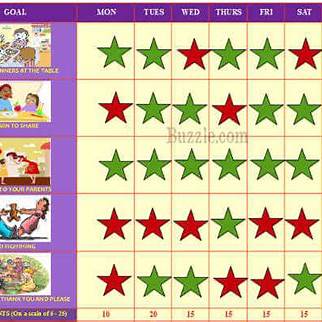Rewards can be powerful for motivating children with ADHD—but only when used with intention and consistency. When done right, they reinforce positive behavior, help build new habits, and create a sense of achievement. When done wrong, they lose their effect, create dependency, or even fuel power struggles.
Here’s how to use rewards to encourage progress, not pressure.
Why Rewards Work Well for ADHD
Children with ADHD:
- Respond better to immediate feedback than long-term goals
- May struggle with internal motivation alone
- Need extra reinforcement to form habits and routines
External rewards provide the structure and motivation that ADHD brains often need—especially early in the learning process.
1. Choose Rewards That Are Meaningful to Your Child
What works for one child might not work for another:
- Stickers, points, or tokens
- Special time with a parent
- Choosing a game, snack, or weekend activity
- Screen time or extra bedtime story
Ask your child what excites them. Let them help design the reward menu.
2. Be Clear About What Behavior Earns the Reward
State the expectation specifically:
- “If you brush your teeth without reminders, you earn a star.”
- “You get 5 points if you finish homework before 6 p.m.”
Avoid vague goals like “Be good.”
Specific goals build clarity and success.
3. Use Immediate and Frequent Rewards—Especially at First
ADHD brains crave fast feedback. So:
- Use daily or even hourly rewards for new routines
- Gradually stretch the time between reward and behavior
- Use token systems that let kids track progress visually
As they build consistency, you can move toward longer-term goals.
4. Pair Rewards With Praise
Say:
- “You followed your checklist all by yourself—awesome!”
- “You stayed focused during your reading time—high five!”
Verbal encouragement adds emotional value and reinforces your relationship.
5. Let Them Track Their Own Progress
Use:
- Sticker charts
- Color-coded tokens
- Dry-erase boards or digital point apps
Visual progress motivates and promotes ownership.
6. Include “Mystery” or “Choice” Rewards
To keep things exciting:
- Add a surprise card to the reward box
- Offer a choice between two rewards
- Use a prize wheel or dice system
Variety boosts engagement.
7. Keep Rewards Small and Achievable
Avoid making rewards too big or hard to earn. Instead:
- Use short steps toward larger goals
- Offer frequent wins
- Don’t make perfection the requirement—reward progress
Success keeps motivation alive.
8. Be Consistent—But Not Inflexible
Stick to your reward rules, but adjust if:
- The system becomes overwhelming
- Your child loses interest
- The reward no longer motivates
Check in weekly to see what’s working and what’s not.
9. Avoid Bribes or Bargaining
Don’t say: “If you stop screaming, I’ll give you candy.”
Instead say: “When you use calm words, you earn a point toward your reward.”
Bribes are reactive. Rewards should be structured and proactive.
10. Fade Rewards Gradually
As new behaviors stick:
- Reduce the frequency of rewards
- Replace tangible rewards with natural ones (like pride, praise, and privileges)
- Teach them to track progress for internal satisfaction
The goal is not permanent external rewards—but stronger internal motivation.
Final Thought
When used strategically, rewards help children with ADHD feel capable, seen, and successful. It’s not about spoiling them—it’s about supporting them while their brain builds the skills it needs.
Start small. Stay consistent. And celebrate every step forward.
I tried several suggestions and this one really was the one that gave me the best results. The important thing is that we have to try until we find what works best for our child.
